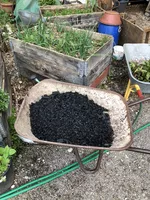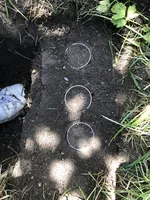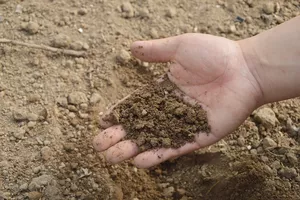SP11: Carbon Sequestration Improving Soil Functionality



Head: Prof. Dr. Dr. Ingrid Kögel-Knabner & Prof. Dr. Monika Egerer
Execution: Lauren Porter
Background
The structural change in urban soils from natural soils affects the diversity of soil functions. The multifunctionality of strongly modified soils in the urban environment is essential for the control of biogeochemical processes. Although soil is inherently capable of buffering against perturbation, overloading the system in the urban environment poses a threat to various functions of urban soils.
Implementing large-scale SUDS programs requires new knowledge about the distribution and functional properties of soils relevant for the control of the respective plant systems and their ESS. The functionality of healthy soils, including serving as a growth medium and habitat, and contributing to the hydrologic cycle through adsorption, storage and supply of water, nutrients and contaminants, are intimately linked to the three-dimensional soil architecture, in turn controlled by the formation and structure of soil aggregates. Soil structural stability is a prerequisite for the functioning of SUDS, to guarantee infiltration capacity. Soil structure is essential for other SUDS functions, such as urban gardening, where soil contamination and water conservation are key objectives. New soil remediation tactics and water conservation strategies are needed to support above- and below-ground biodiversity and function that underlie ESS. Enhanced soil structure can improve soil remediation of contaminants for improved plant quality and water holding capacity to support diverse plant communities. Formation and stability of soil aggregate structure is strongly dependent on the continuous supply with organic matter from plant residues and rhizodeposits and their turnover by the soil microbial community. Previous experiments showed a high potential for artificial and immature soils to sequester carbon. The type of vegetation used and its root system control residue input to the soil and the microbial decomposition of the residues.
In urban environments, high-carbon amendments are common and cheap, such as lawn clippings and compost, with potential to boost soil carbon and structure. Yet it is unclear how different organic amendments can improve carbon sequestration and thereby water and soil contaminant binding, and how these benefits support multifunctional SUDS implementation.
Objectives
In this project, we will conduct experiments using high-carbon organic soil amendments (HCAs) in combination with nutrients aimed to improve urban soil structure and soil functionality for contaminant remediation.
Our objectives are to
- (O1) Investigate the role of different soil amendment combinations to improve soil carbon sequestration and the associated formation of soil structure;
- (O2) Assess the ability of improved soil structure for soil water and contaminant binding for soil functionality;
- (O3) Analyze the potential of HCA soil remediation strategies for above-ground plant communities and below-ground microbial communities for implementing UGIs such as wild flower strips and urban food gardens.
We predict that
- (H1) HAC additions in combination with appropriate nutrients increase soil organic carbon storage;
- (H2) Increases in soil carbon sequestration improve soil water and contaminant binding by amendment-induced boosts to soil C and C:N;
- (H3) Strategic amendments in heavily impacted urban areas ameliorate conditions for implementing UGI systems that increase above- and below-ground biodiversity and functions.
Methods
Experiments with different organic amendments will be conducted to improve soil structure in SUDS, which in turn is considered to improve water and contaminant binding. In stage 1, we will use a recently developed soil incubation system that allows to investigate the potential of soil mixtures and different abundant and cheap amendments (HCAs: green waste, compost, biochar) for C storage and soil structure development. In stage 2, we will employ a split-plot design of multiple replicates to test how these high-carbon organic amendments improve water and contaminant binding in soils. In this phase we will join forces with the other projects within Cluster 3 at the experiment implemented in outdoor plots at TUM Garching where different plant composition is tested. Coupling the choice of waste mixture ratios and plants leads to a greater positive impact on soil functions than the choice of amendments alone. We will determine soil organic carbon, aggregate size and stability, water holding capacity, decomposition and specific target pollutant phases (Cu, Zn, Ni, Cd, Pb) as key indicators for improved soil structure and function in SUDS. In stage 3, we will implement strategies in Munich on plant systems to test how improved soil structure and function can promote e.g., plant functional diversity but also to reduce contaminant risks associated with urban food gardening. This field work is intimately linked to SP13 at SUDS with high water quality (SP10). The subproject will be co-led by Kögel-Knabner and Egerer for stages 1 and 2, while stage 3 will be mainly supervised by Egerer with support from Kögel-Knabner where needed, and a foreseen professorship for soil biophysical functioning will contribute when hired.